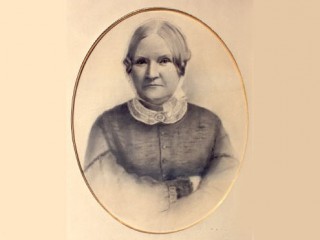
Lydia Maria Child biography
Date of birth : 1802-02-11
Date of death : 1880-07-07
Birthplace : Medfort, Massachusetts, U.S.
Nationality : American
Category : Famous Figures
Last modified : 2010-07-16
Credited as : Author, abolitionist,
3 votes so far
The popularity and moral force of the American author Lydia Maria Francis Child contributed to the impact radical abolitionists exerted on the antislavery debate that preceded the Civil War.
Lydia Maria Francis was born in Medford, Mass., of an old New England family, on Feb. 11, 1802, and revealed early her sensibilities and intelligence. Her novels of pioneer life, Hobomok (1824) and The Rebels (1825), opened a literary career for her. Juvenile Miscellany, an annual that she instituted in 1826, pioneered in its field, and her later publications appealed to girls and wives. In 1828 she married David Lee Child, a Harvard College graduate who had capped an idealistic, adventurous youth by becoming a lawyer. As a state legislator and editor of the Massachusetts Journal, he seemed on a successful path.
Both were converted to abolitionism by William Lloyd Garrison, but it was Lydia who most startled conventional circles with her Appeal in Favor of That Class of Americans Called Africans (1833). This tract made abolitionists of such noteworthy persons as the Reverend William Ellery Channing and Charles Sumner. It also, however, closed various social circles to her and caused her book sales to fall. Her Juvenile Miscellany suspended, she pressed on as author and abolitionist. She published several abolitionist compilations, as well as biographies of notable women and the groundbreaking History of the Condition of Women in Various Ages and Nations (1835). Her husband introduced beet sugar manufacture in the United States and penned important abolitionist pamphlets. However, he was impractically dedicated to agricultural experiments, and his wife was required to manage their often-constricted finances.
In 1840 Child assumed the editorship of the National Anti-Slavery Standard, representing Garrison in New York. While there she wrote Letters from New York (1843, 1845), which contained much of contemporary interest. Her husband joined her in the work in 1843. The next year, embittered by factional differences between abolitionists, she returned to private life, settling in Wayland, Mass. Among her later books was Progress of Religious Ideas through Successive Ages (1855), which once more broke ground in its religious liberalism.
When John Brown was wounded in the raid on Harpers Ferry, Va., in 1859, Child asked permission to nurse him; this resulted in an exchange of letters which were read nationwide. Correspondence between Lydia Maria Child and Gov. Wise and Mrs. Mason of Virginia (1860) exhibited her abolitionist prose at its strongest.
Child's later writings struck a summary note, as in Looking toward Sunset (1864). Many of her works were outmoded, but her own character evoked admiration. She survived her husband 6 years, dying on July 7, 1880. A memorial volume, Letters (1883), was introduced by John Greenleaf Whittier and included Wendell Phillips's funeral address.
Child was inducted into the National Women's Hall of Fame in Seneca Falls, New York, on October 5, 2002.
















